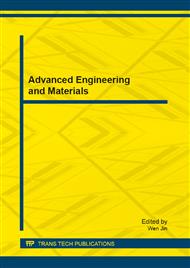p.248
p.252
p.258
p.263
p.269
p.275
p.280
p.286
p.292
The Research of the High Speed Steels Produced by Powder and Casting Metallurgy from the View of Tool Cutting Life
Abstract:
High speed steels have a leading position in the group of tool materials today in regard to their special properties. The article deals with the cutting life of tools, which cutting tips were produced from high speed steels. The test were realized at Faculty of Manufacturing Technologies TU Kosice with the seat in Presov, in collaboration with Institute of Material Research of Slovak Academy of Sciences in Kosice. As the method for tool-life investigation was selected the simple radial lathe-turning test. The measured values were statistically processed and submitted to the remoteness testing according to Grubbs. The results of the experiments are graphically presented as a dependence of cutting life on the cutting speed for five types of high speed steels. The base material for four of them was high speed steel STN 19 830 produced via powder metallurgy. It was modified by additional alloying elements, so in this way originated next variations of this steel listed above. Measured data were compared with the fifth type of high speed steel with similar chemical composition, but this type was produced via classical approach - by casting metallurgy. The know-how of the investigated relation will enable to the producers to make a good decision about what type of tool material should be used at the machining in specific conditions in order to achieve good quality of machined surface while achieving the required level of energy consumption.
Info:
Periodical:
Pages:
269-274
Citation:
Online since:
February 2013
Authors:
Keywords:
Price:
Сopyright:
© 2013 Trans Tech Publications Ltd. All Rights Reserved
Share:
Citation:


